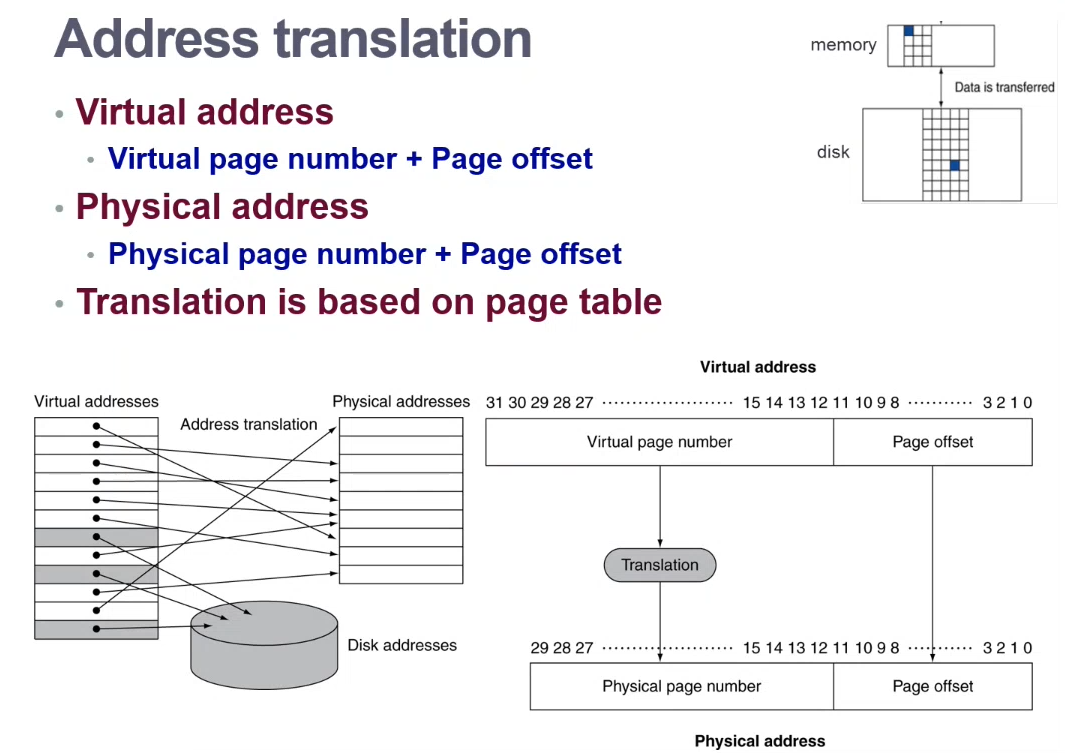Virtual Memory
Contents
Virtual memory is a memory management technique that uses the main memory and disk to create an illusion of very large memory to the user. It acts as a redirection layer to make user-based memory access easy.
- Each program has its own allocated virtual memory region, and they unaware of any redirection - virtual memory is transparent

- Page - A virtual block
- Page table - information of page mapping - located in the main memory
- Page hit - data accessed is found in the page table
- Page fault - data accessed is not found in the page table


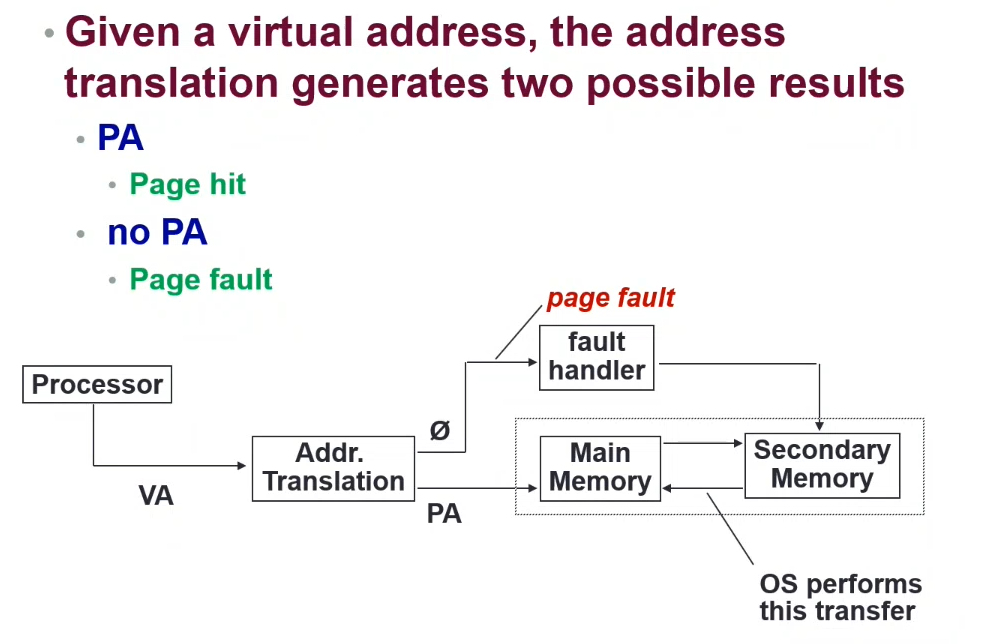
Page Table
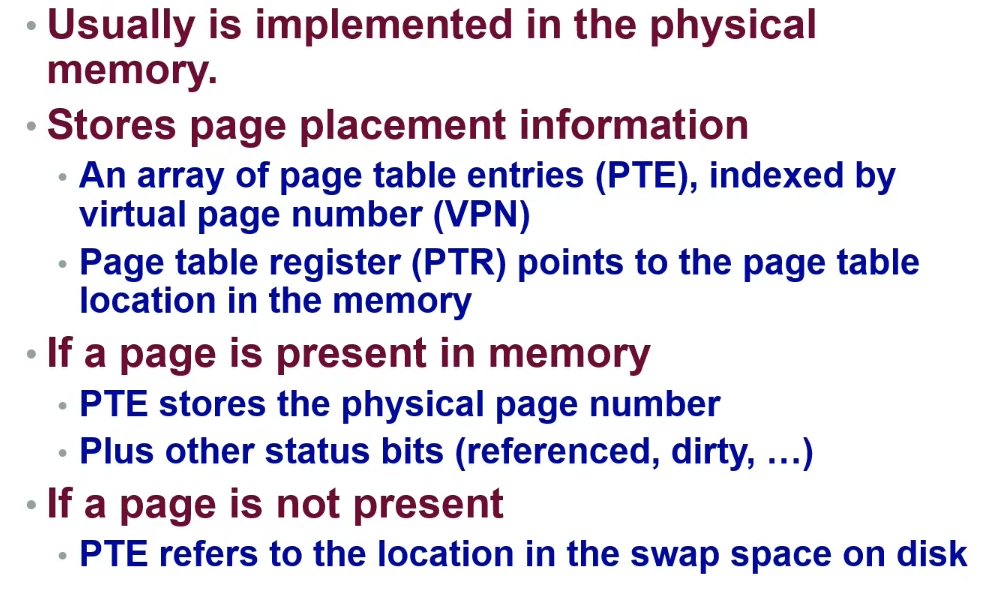
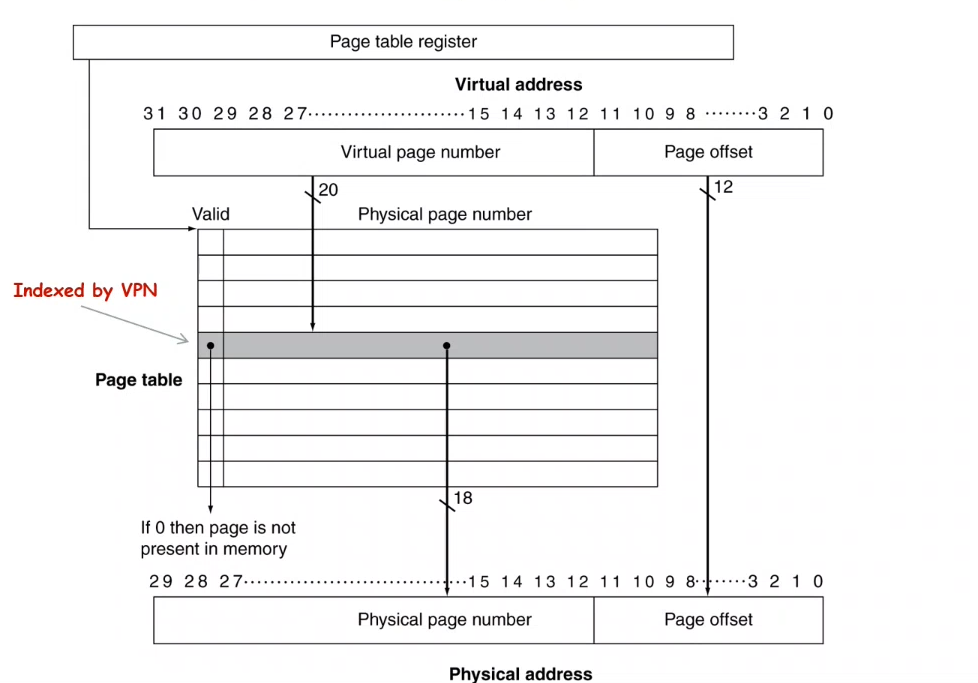


question kinda bad.
Of the requested address, the first 12 bits are the page index, and the last 12 bits are the offset. (8KB -> 2**13 , round down is 12 bits)
PTR + first 12 bits of the virtual address = PA frame
PA frame || 0x20 = 0x45020 ---> 0x6676
Multi-level Page Tables
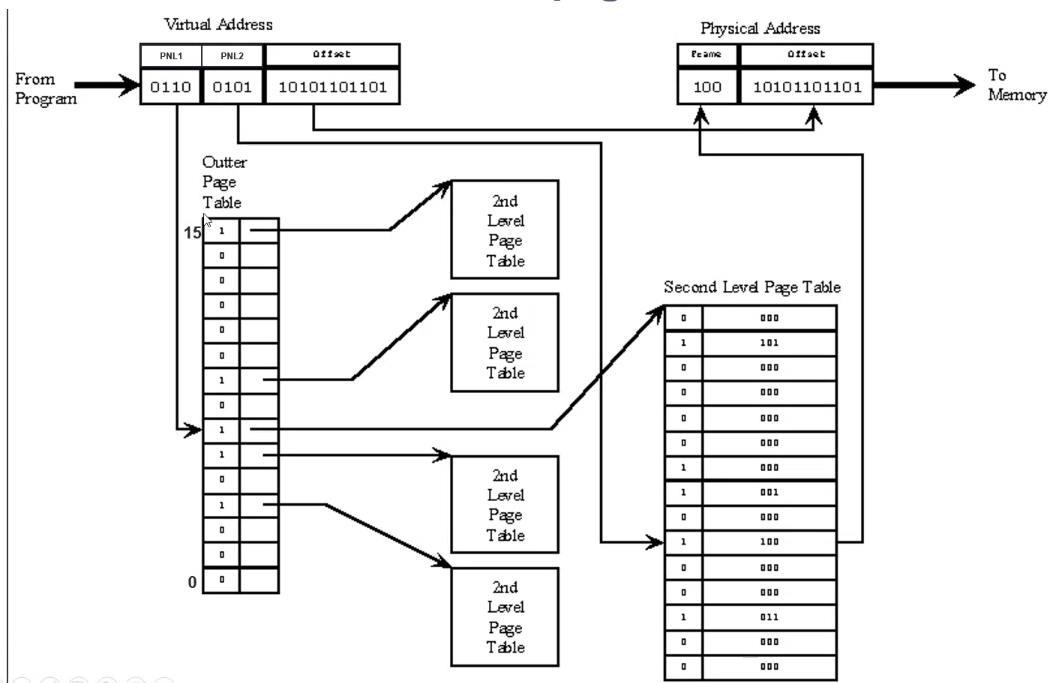
- Better if memory availability is sparse / not contiguous
- n'th level tables can be left un-initialised if not needed
TLB (Translation Lookaside Buffer)
Small cache for the page table lookups.
As the cache is small, cache design can be full aassociative.
For mid-range machines, a small n-way set associative architecture may be used instead

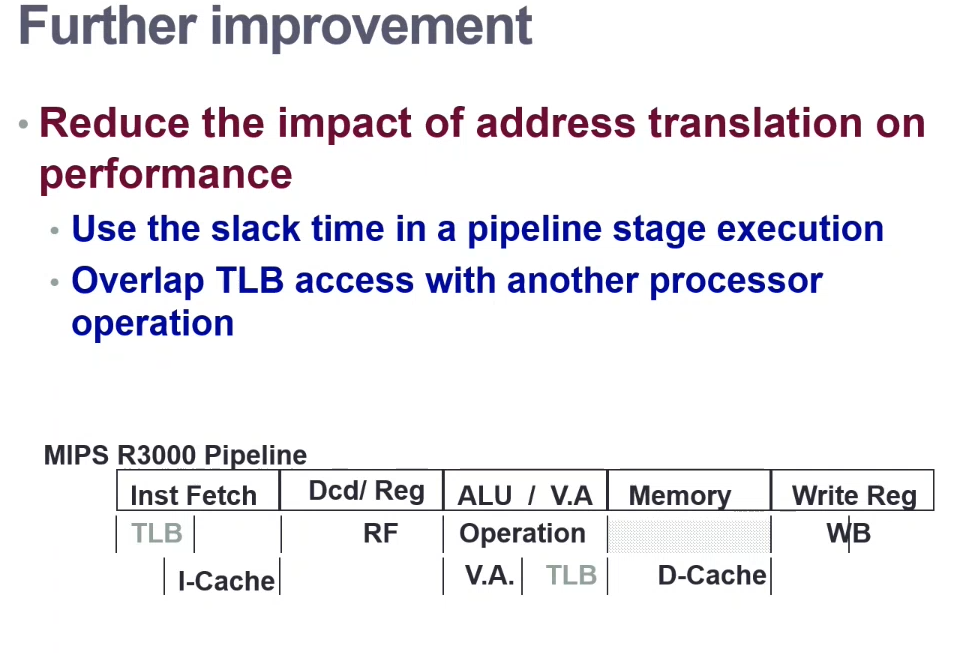

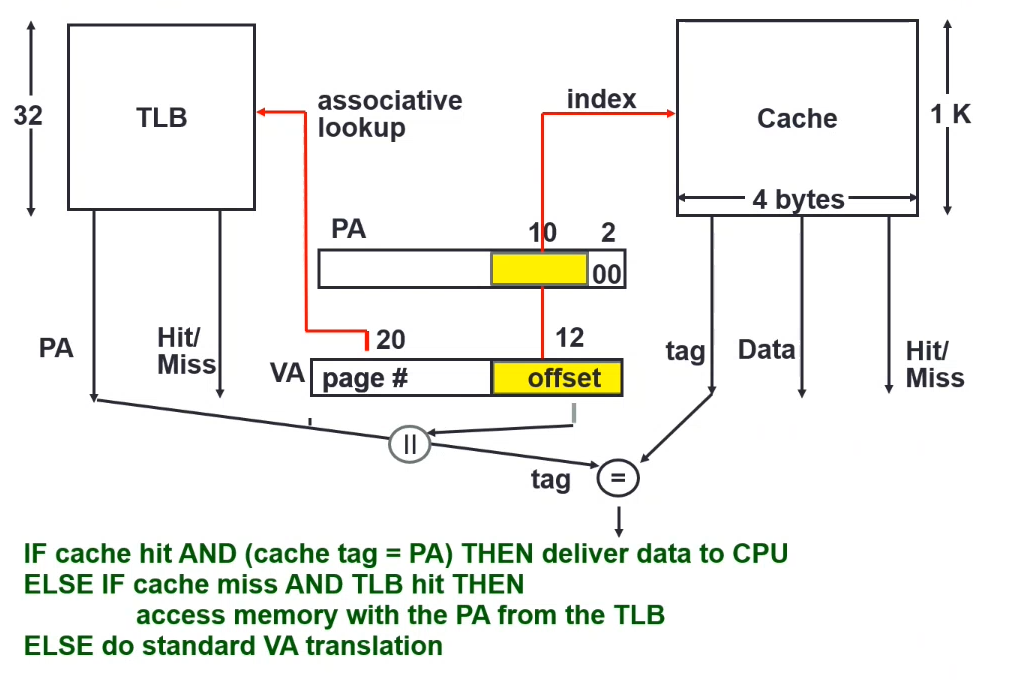
Hardware Address Translation
